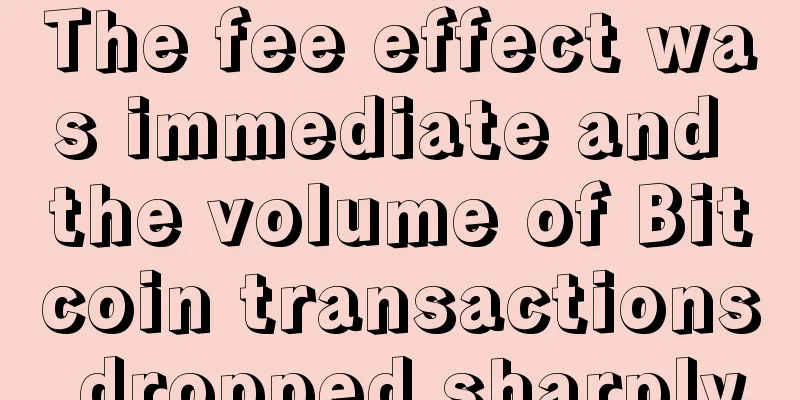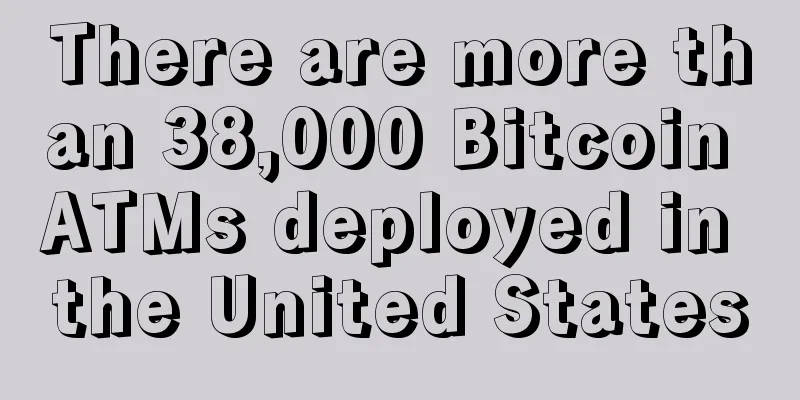The fee effect was immediate and the volume of Bitcoin transactions dropped sharply

|
Starting at 12:00 noon on January 24, the three major Bitcoin platforms, including Huobi, BTC China, and Bihang, simultaneously started charging transaction fees in both directions, charging 0.02% of transaction fees for each transaction. This is another "rectification" measure taken by the three major platforms after deleveraging on January 16. Before 12:00 on January 24, the transaction volume did not change significantly, but after 12:00, the transaction volume shrank sharply. However, the price did not dive with the shrinking transaction volume. Trading volume shrinks rapidly January 23 was the last day of “free trading” for Bitcoin. In a Bitcoin investment group, a player who used a robot ( 20.070 , -0.18 , -0.89% ) to do high-frequency trading shouted in the group, “Last 24 hours, robot, come on!” Sure enough, the transaction volume was still considerable in the first half hour before the transaction fee was collected at 12:00 on January 24. When the "fee bell" rang at 12:00, the transaction volume immediately shrank. The transaction volume of the currency bank in the 30 minutes after 12:00 was 822.91 coins, which was 21% of the volume in the first 30 minutes. As regulators came in to conduct inspections, Bitcoin platforms began to rectify their actions, and Bitcoin trading volume had already shrunk significantly before the transaction fees were charged. On January 23, the day before the three major platforms began to charge transaction fees, the 24-hour trading volume of BiXing was 433,900 coins; Huobi was 267,100 coins; and Bitcoin China was 318,200 coins. Compared with the peak level of 3 million coins, it has shrunk significantly. Regarding the shrinking trading volume before charging transaction fees, veteran player Ruizitong CTO Yan Zhi said: "This may be because the trading platform's volume-boosting robots can no longer work during the period when the regulatory authorities are stationed; another possibility is that the players' own high-frequency trading has decreased after the price fell; or it may be the result of the combination of these two reasons." After the transaction fee was charged on the 24th, the transaction volume further shrank. Many players in a Bitcoin trading group said that in the fee-charging era, Bitcoin transactions will go from millions of transactions to tens of thousands or even thousands of transactions. The media director of a Bitcoin trading platform said earlier that 90% of the platform's trading volume was high-frequency trading. According to the announcement of the three major platforms, after the 24th, the platform will charge a transaction fee of 0.02% for each transaction, and the fee will be charged in both directions. "Based on 6,000 yuan per Bitcoin, it means that it is rational to start trading when the price rises by more than 24 yuan." The above-mentioned player told reporters, "But after the regulatory authorities moved in, the price has been stable at around 5,500 to 6,000 yuan, and there are not many opportunities to meet the conditions." A media director of a platform told reporters that the regulatory authorities' requirement to collect transaction fees is intended to cool down Bitcoin. He said: "The platform has not yet determined whether to maintain the current fee plan." However, although the trading volume shrank rapidly, the price did not drop. At 8 pm on January 22, when the three trading platforms announced that they would start charging transaction fees on the 24th, the price of Bitcoin on the three platforms was about 6,251 yuan. At 3 pm on the 24th, three hours after the fee was charged, the price of Bitcoin on the three platforms was about 6,340 yuan. The price rose instead of falling. Some players explained that the prices on overseas platforms were strong, and the platforms moved between platforms, causing the prices on domestic platforms to rise. However, some players said: "It may be that the dealer is controlling the market and waiting for the price to drop before harvesting leeks." Small platform self-inspection In fact, the regulatory authorities’ “attention” to Bitcoin transactions is extraordinary. A person from a platform in Beijing said that since October 2016, the regulatory authorities have met with the person in charge of the Bitcoin platform several times to understand the platform’s operations. At the beginning of 2017, the regulatory authorities first met with the person in charge of the platform and then went to the site for inspection. The total market value of Bitcoin in circulation worldwide is only RMB 100 billion, which is less than the market value of some A-shares. With the entry of regulatory officials on January 11, 2017, the rectification of Bitcoin platforms began. The three major platforms first deleveraged: they stopped financing and currency lending services; on the evening of January 22, the three major platforms announced that they would charge transaction fees; at the same time, some small platforms also began to conduct self-inspections and stopped their wealth management services. On January 13, Shanghai-based Bitcoin China (BTCC) took the lead in announcing on its website that it would suspend its margin trading services. Beijing-based Huobi and Okcoin also suspended their margin trading services shortly afterwards. At the time, the two trading platforms explained that their "quota" had been used up. On January 18, the two platforms admitted in an interview with the media that they had stopped their margin trading services at the request of the regulatory authorities. A person from a certain platform said that the financing and currency lending business is the second largest source of income for domestic trading platforms, second only to the withdrawal fee. Taking financing as an example, the three platforms charge a daily interest rate of 0.1%. Players can borrow up to 4 times their account balance (including Bitcoin and RMB in the account). After deleveraging, the three major trading platforms almost simultaneously announced on the evening of January 22 that they would charge a 0.2% transaction fee starting at 12 noon on January 24. In addition to the three major trading platforms, small platforms also secretly cleaned up on their own. On January 12, the bitcoin platform btc123 announced the suspension of its bitcoin financial management business. On the same day, the reporter called another bitcoin trading platform, Yuanbao.com, and found that the platform had also stopped its bitcoin financial management business. Bitcoin financial management refers to investors depositing bitcoins in financial institutions to obtain fixed returns. The expected annualized return of bitcoin financial management on the btc123 platform for 6 months is 8%. Sha Qian, a well-known digital currency scholar, said: "At present, many small platforms, in addition to providing bitcoin transactions, also carry out businesses including financial management, and most of these businesses are unlicensed." Bitcoin management needs to be further strengthened "The bitcoin trading industry is currently in a state of chaos. Many small platforms are illegally conducting pyramid schemes, gambling and other businesses under the guise of bitcoin and other digital currency transactions." Sand Dollar previously said that charging transaction fees may be the most efficient management method, "Other management methods can also work, but the management costs are high. Charging transaction fees can to a certain extent curb high-frequency transactions and prevent price fluctuations. Charging transaction fees is more convenient and easy to implement." Gong Ming, a well-known blockchain figure, said: "De-leveraging, coupled with charging transaction fees. Bitcoin transactions can be standardized." At present, the Bitcoin trading system in the United States is relatively sound, and some Bitcoin platforms operate under the "futures trading" license. Bitcoin platforms in New York State (including those that provide trading services to investors in New York State) should apply for a Bitcoin license (Bitlicense) to operate. Currently, there are three trading platforms in the United States, including Circle, Ripple, and Coinbase, that have Bitcoin licenses issued by the New York State. Regarding the licensing system, Sha Qian believes that given the current size of Bitcoin, the possibility of implementing a licensing system is not high. |
<<: Bitcoin regulation upgrade: allegedly involving cross-border transfer of assets
>>: Hong Kong has great potential to become a fintech hub
Recommend
Swift: Blockchain technology will not subvert our business model, and we are developing new technologies to deal with it
Financial infrastructure is on the verge of being...
A complete illustration of a person with a round nose
A complete illustration of a person with a round ...
Your luck in gambling can be seen from your face
In physiognomy, everyone's fortune is differe...
Will the financial industry use public blockchains? Quantum blockchain provides this possibility
In August this year, the Qtum open source communi...
What kind of person is she in the eyes of a woman
What kind of person is she in the eyes of a woman...
Cold winter! "No salary for three months", blockchain media is in arrears and layoffs
Naked swimmers are only revealed after the tide g...
The face of a woman with constant peach blossoms
The face of a woman with constant peach blossoms ...
What does a red mole on the neck mean?
In addition to the special explanations for moles...
What is the face of a man who is lucky for his wife? Physiognomy tells you which men are lucky for their wives
Nowadays, many women want to find a man who can b...
The sharp fluctuation of Bitcoin's "exchange rate" brings room for speculation, and the sales of professional "mining" equipment soars
When I last opened Mt.Gox yesterday, the "ex...
Mining machine classification introduction
There are at least hundreds of cryptocurrencies o...
What does a mole near a woman’s ear mean for her fate?
One of the factors that influence numerology is t...
How to have a good marriage if there is a red mole on the ring finger
It is not uncommon to have a mole on the ring fin...
Revealing the taboos in love from face reading
The more passionate love is, the more hurtful it ...
Mole position and destiny - what does a mole on a man's nose mean
Men with moles on the tip of their noses are pron...









